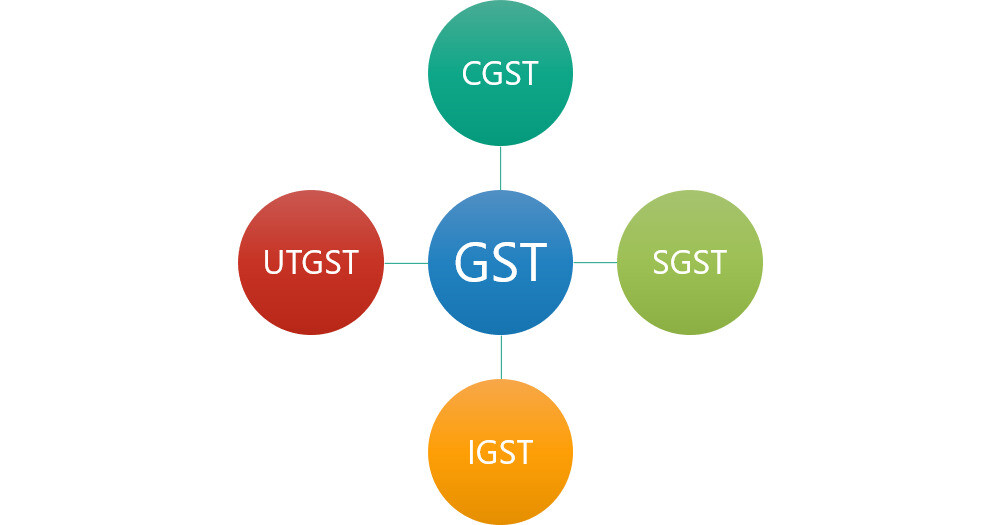The GST (Goods and Services Tax) regime was introduced on July 1, 2017. It is one of the most significant and revolutionary indirect tax reforms in India post-independence. GST subsumed a number of indirect taxes levied by the Central and State Governments. Taxes such as Central Excise duty, Service Tax, VAT, Purchase Tax, Central Sales Tax, Entry Tax, Local Body Taxes, Luxury Tax, etc.are now non-existent.

What is GST?
Goods and Services Tax (GST) is a value-added tax levied on the supply of goods and services for domestic consumption. GST is, therefore, an all-encompassing, single indirect tax law for the entire country.
This tax is included in the final price of a product. A customer who buys said product pays its price inclusive of the GST. The business or seller then forwards its GST portion to the government.
The Central Government of India levies this tax. In the case of intrastate transactions, this tax is distributed between the central and state government under CGST and SGST.
Framework under the Goods and Services Tax:
Under the GST law taxes can be further classified into these four types:
1) Central goods and services tax (CGST)
2) State goods and services tax (SGST)
3) Union territory goods and services tax ( UTGST)
4) Integrated goods and services tax (IGST)
What is Central Goods and Services Tax (CGST)
Central Goods and Services Tax or CGST is the indirect tax levied by the Central Government. It is levied on the transaction of goods and services which are undertaken within the state i.e. intrastate. The tax collected under the head “CGST” is payable to the central government treasury.
The CGST is charged to compensate the central government for previously existed indirect taxes such as
- Central Excise Duty,
- Service Tax,
- Duties of Custom,
- Surcharges,
- Cesses, etc.
The CGST is charged along with SGST or UTGST and at the same rates. This is done as per the Dual GST model followed in India, where both central and state governments have their separate taxation legislatures.
What is State Goods and Services Tax (SGST)?
State Goods and Services Tax or SGST represents the tax imposed by the State Government. SGST is levied on intrastate sales of goods and services, i.e., sales made within a state.
SGST is charged along with and at equal rates of CGST on a good or service. All the states of India charge this tax but has also been adopted by two union territories of
- Puducherry and
- Delhi,
because both of these union territories have their legislative assembly and council.
The tax revenue under SGST goes to the State Government treasury or the eligible Union Territory where the consumption of goods or services has taken place.
What is the Union Territory Goods and Services Tax (UTGST)?
Union Territory Goods and Services Tax or UTGST is similar to SGST. The only difference is that the tax revenue goes to the treasury for the respective administration of the union territory where the goods or services have finally been consumed. There is a key difference between union territory and states. The Union Territory directly comes under the supervision of the Central Government and does not have its own elected government as in the case of States.
UGST is also charged at the same rates of CGST. But, amongst UTGST or SGST, only one at a time shall be levied together with CGST in each case.
Currently, there are 8 union territories in India:
- Chandigarh
- Lakshadweep
- Dadra and Nagar Haveli & Daman and Diu
- Ladakh
- Andaman and Nicobar Islands
- Delhi
- Puducherry
- Jammu and Kashmir
But out of these Delhi and Puducherry levy SGST and not UTGST because they have their own elected members and Chief Minister. Hence, they function as partial – states. As the SGST Act cannot be applied to a union territory that does not have its legislature.
What is Integrated Goods and Services Tax (IGST)?
IGST is levied on all interstate supplies of goods and services by the Central Government, unlike, CGST, SGST, & UTGST, which are levied upon the supply of goods or services within a state.
IGST has provided a standardization to taxation on the supply of goods and services made outside the state. This applies both to a supply made outside the state and outside the country.
The rate of IGST would always be approximately equal to the CGST rate plus the SGST rate.
For Example:-
Now, let’s take a situation to understand all the taxes under GST in a nimble way;
Suppose the sale of goods is worth Rs 10 lakhs. It attracts GST @ 18%. Consider the computation GST payable under relevant heads in the following scenarios
- The sale is done within the same state i.e. intrastate sales
- Sale is done within the union territory i.e. intrastate sales
- The sale is done to another state i..e interstate sales
| Situation | Analysis | Taxes Applicable |
| Sales within the same state | Intra-state Supply | CGST @ 9% +SGST @ 9% |
| Sales within the same union territory | Intra-state Supply | CGST @ 9% +UTGST @ 9% |
| Supply to another state | Inter-state Supply | IGST @ 18 |
Question
Let us assume that
- Goods worth Rs. 20,000 are sold by Shubham from Gujarat to dealer Rahul in Gujarat
- Dealer Rahul resells such goods to trader Mahesh in Uttar Pradesh for Rs. 22000
- Trader Mahesh now sells such goods to consumer XYZ in Uttar Pradesh for Rs 29,000
Solution
- Since Shubham sells goods to Rahul in Gujarat, the supply takes place in the same state (Gujarat in this case). Hence, this is like Intra state supply. Further, for this Intra State transaction between Shubham and Rahul, CGST@9% and SGST@9% each shall be applicable.
- In the second instance, dealer Rahul resells such goods in different states i.e. Uttar Pradesh to Mahesh. This is the case of interstate supply. Hence, IGST @18% shall be calculated on this particular transaction between Rahul and Mahesh.
- And at the end, Mahesh sells such goods to end users in the same state of Uttar Pradesh to XYZ. Since supply within the state falls under an Intra state supply, CGST@9% and SGST@9% each shall be levied on this supply.
FAQs
What is IGST?
IGST is a part of Goods and Service Tax (GST). IGST means Integrated Goods and Service Tax, one of the three categories under Goods and Service Tax (CGST, IGST, and SGST). It is charged on interstate supply of goods or services, which means on transactions with other states or countries. For example, if goods are moved from Tamil Nadu to Kerala, IGST is levied on such goods.
How is IGST calculated?
GST is applicable on all imports into India and Interstate supply in the form of a levy of IGST. IGST is levied on the value of imported goods + any customs duty chargeable. Hence, IGST must be calculated after adding the applicable customs duty to the value of imported goods.
